Enterprise Sales Template
Close large accounts with our enterprise sales proposal – create an impressive, persuasive, and tailored proposal in less time.
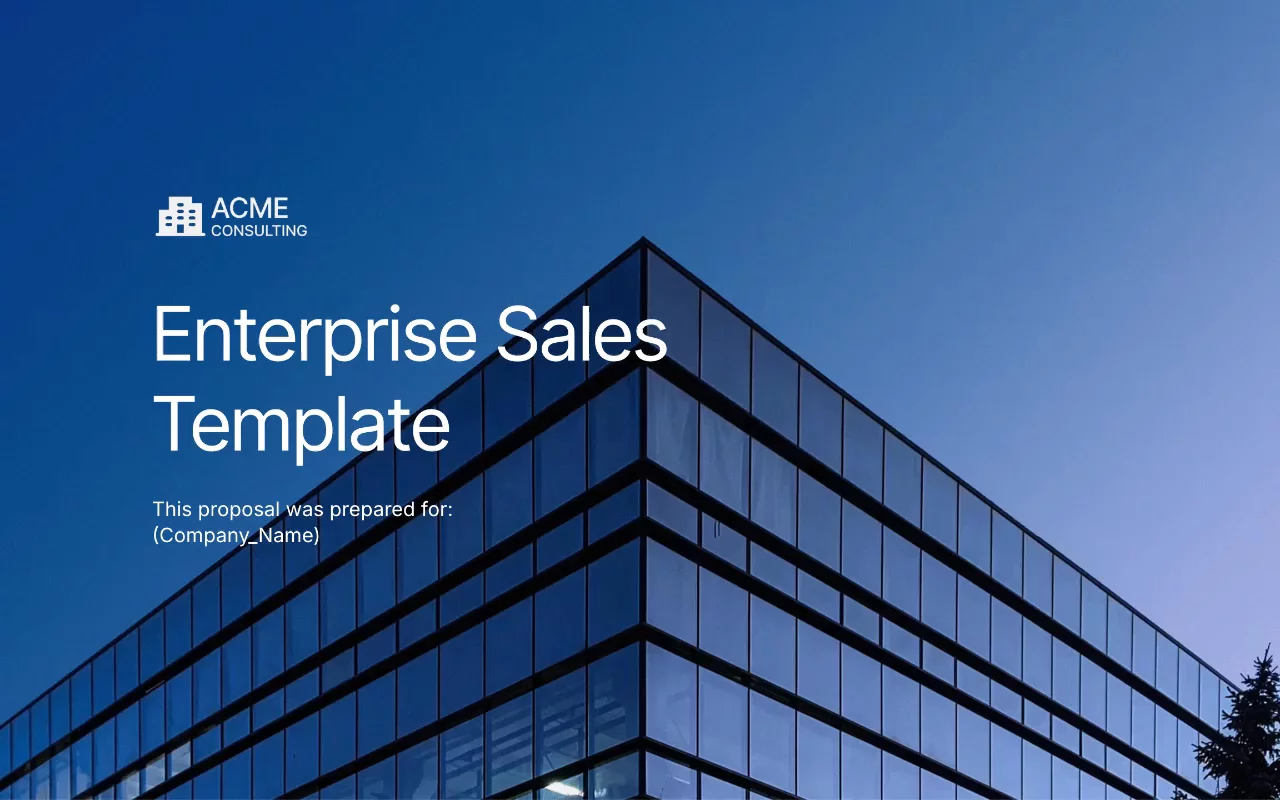
About this template
Impress the entire buying committee and manage complex enterprise sales cycles with an interactive and easy-to-use Enterprise Sales template. Our template ensures a seamless buying experience, helping your sales representatives close complex deals and win more business.
What's included?
- Product executive summary
- Customer service overview
- Customer case studies
- Security and privacy compliance
- Terms and conditions
- Ability to accept and sign the terms
- About the company
- Contact us information
Included in our template
Key stakeholders and value alignment
Enterprise deals rarely hinge on a single decision-maker. That’s why the templat maps out the key stakeholders involved and clarifies the business value for each. Instead of sending a generic sales proposal, your team can highlight the strategic alignment between your solution and the client’s goals. This approach builds consensus across departments and makes it easier for buying committees to rally around your offering.
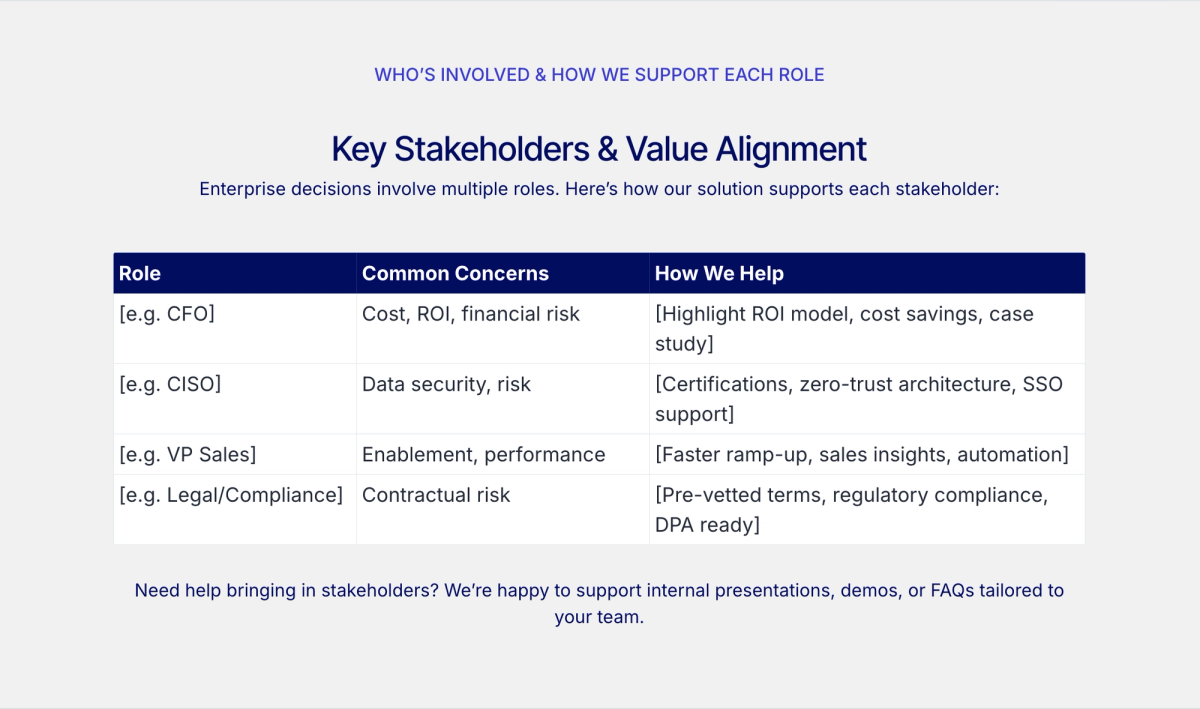
Product overview
Complex solutions can be hard to communicate through text alone. With Qwilr’s interactive proposal format, you can embed product demo videos directly into the document. Prospects don’t just read about your product — they see it in action.
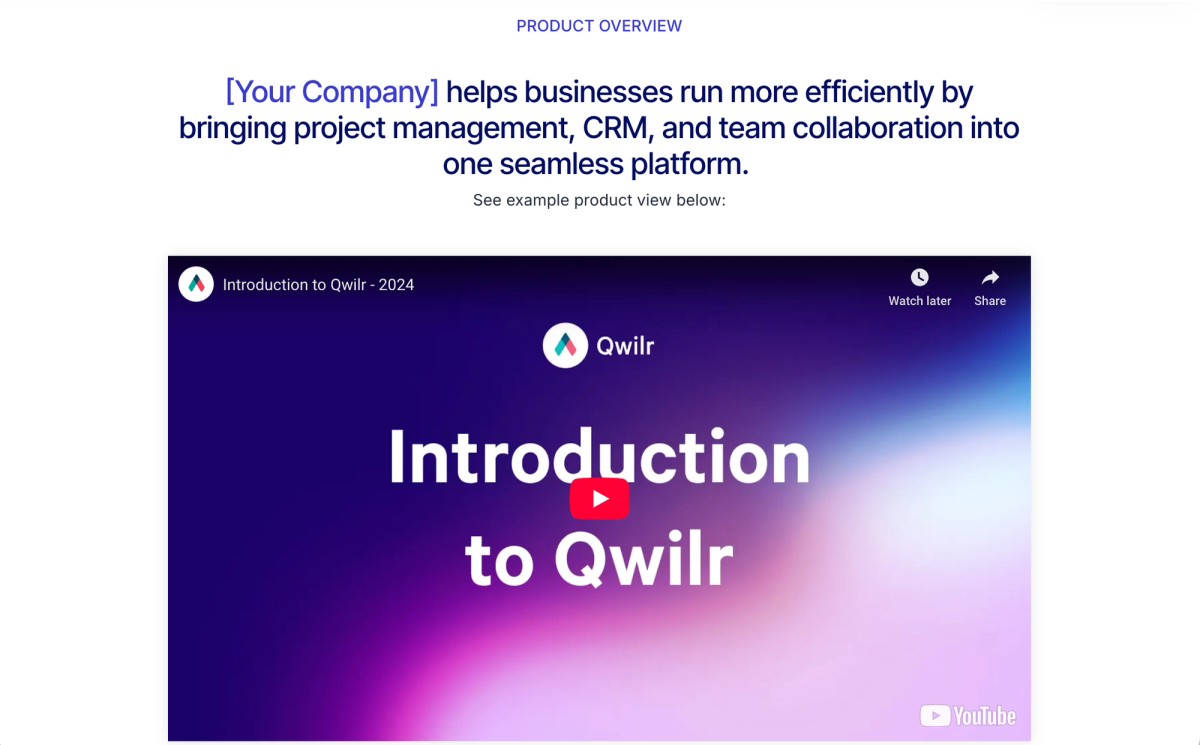
Implementation timeline
Large organizations need to know how quickly and smoothly they can get up and running. The template includes a structured implementation timeline that sets clear expectations from kickoff through to adoption. With Qwilr, you can easily customize milestones, responsibilities, and projected completion dates so stakeholders have confidence in your delivery.
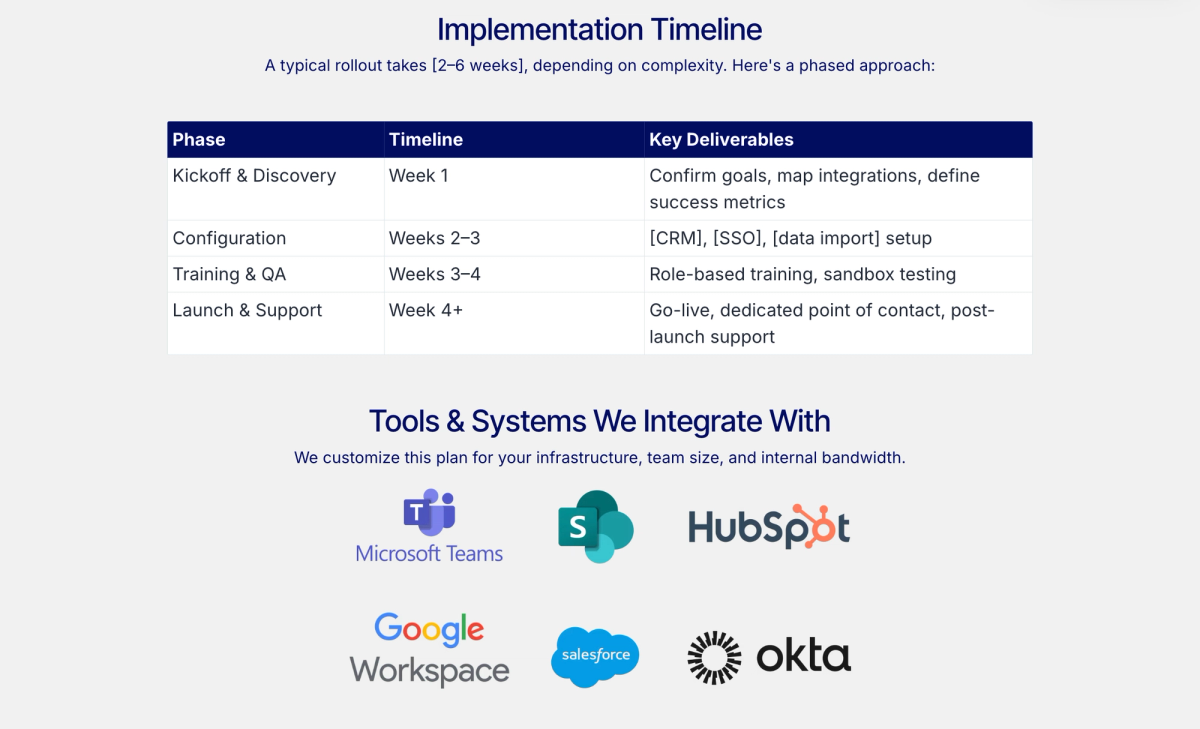
Customizable ROI calculator
Instead of static spreadsheets, you can present a dynamic, interactive calculator that shows prospects the potential return on investment of your solution. This makes it easy to tie value directly to their business outcomes, turning abstract benefits into hard numbers that decision-makers can’t ignore.
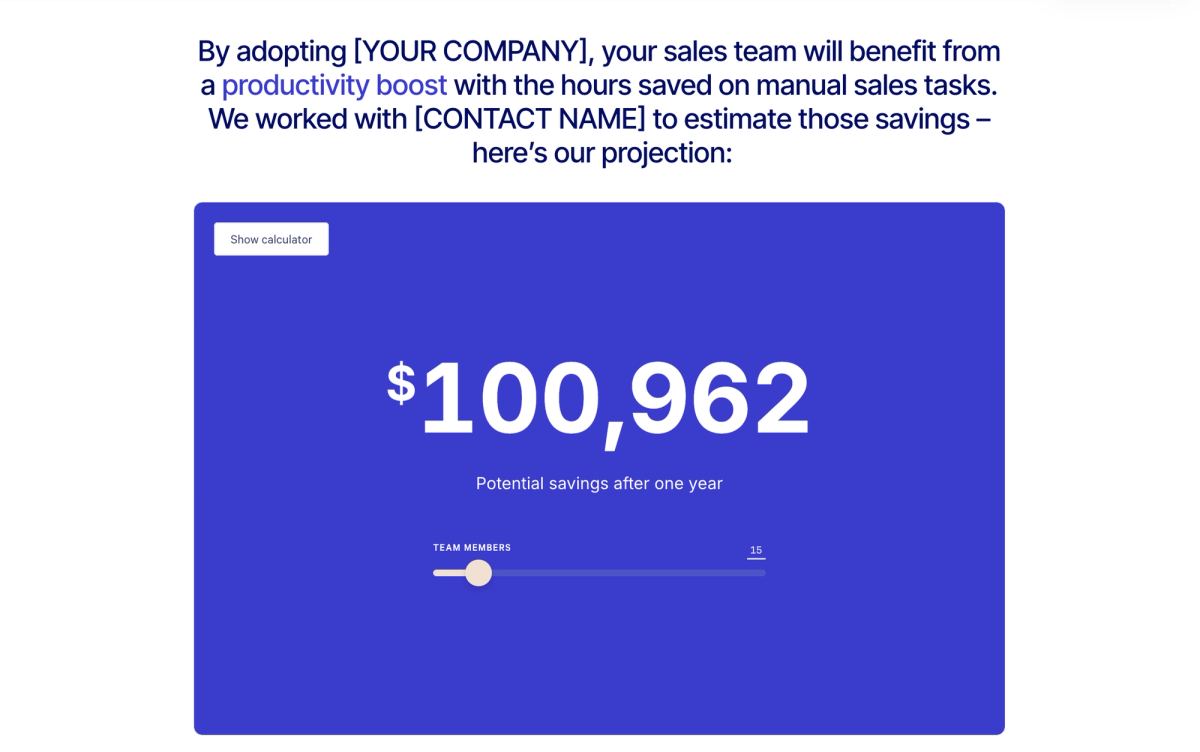
Dynamic pricing
Pricing conversations are often the most sensitive part of enterprise sales. With Qwilr, you can present pricing in a clear, interactive format that scales to different contract lengths, user counts, or package options. Prospects can self-serve by toggling between tiers or customizing their configuration, while you retain full control over how pricing is structured and displayed. This flexibility ensures transparency while keeping the proposal professional and polished.
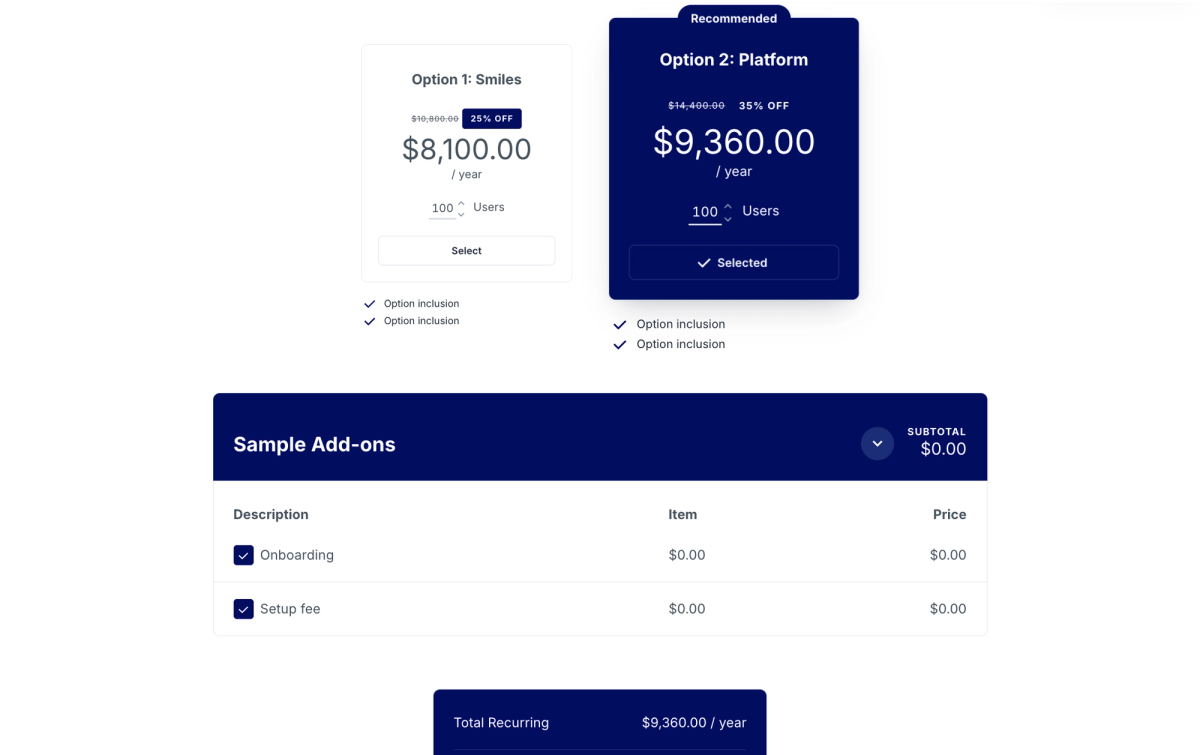
Clear next steps
Every enterprise sales proposal should end with a clear path forward. This template makes it effortless to keep the momentum going by embedding scheduling links for meetings and including an Accept button so buyers can approve and sign instantly. Instead of chasing signatures or scheduling emails, your prospects can take the next step without leaving the proposal. Faster approvals mean fewer delays and more deals closed.
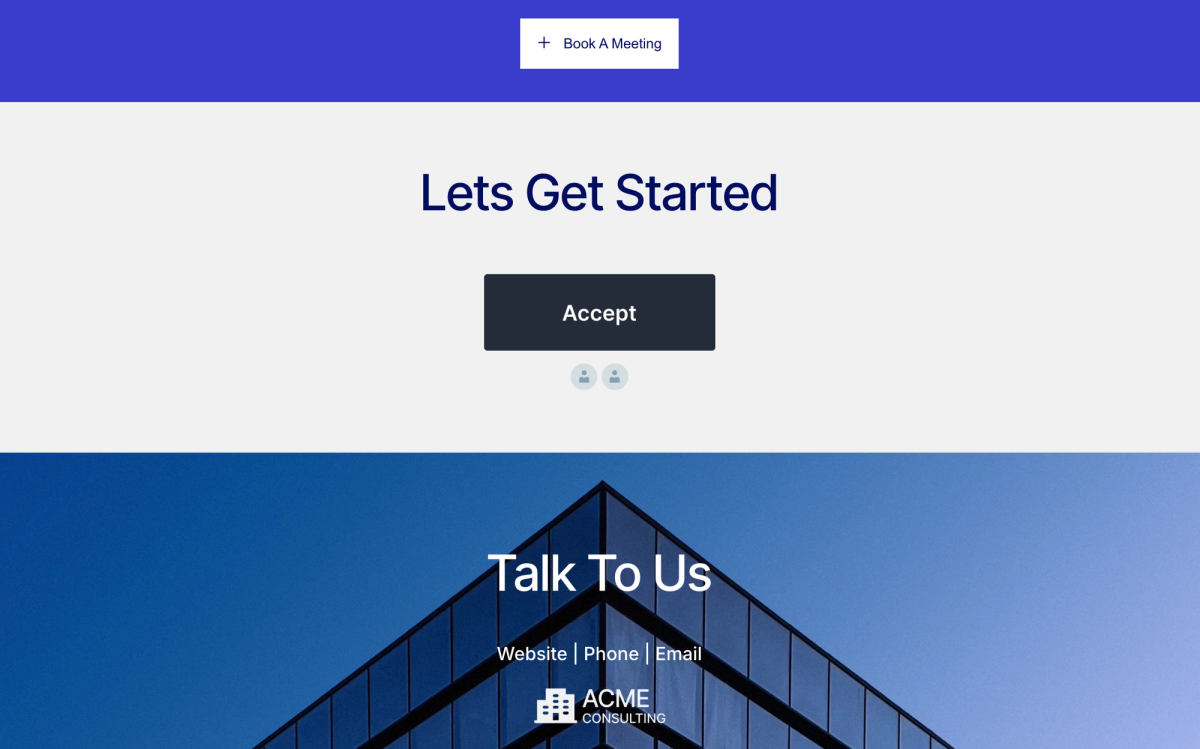
Why Qwilr?
Design interactive proposals
Impress buyers with interactive proposals that stand out. Qwilr’s drag-and-drop editor makes it easy to create on-brand, stunning collateral — no design skills needed. Add videos, dynamic pricing, and ROI calculators to deliver a unique experience, while automated brand customizations ensure every proposal looks professional.
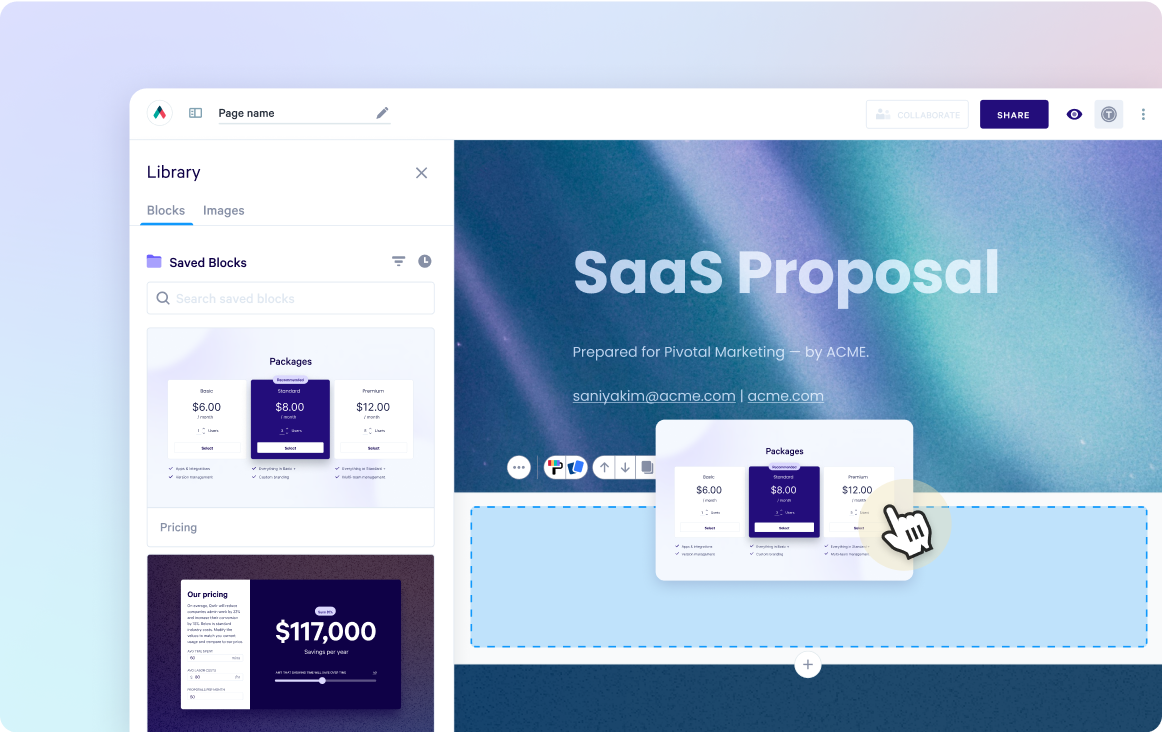
Built-in e-sign functionality
Combine stunning proposals, plain-text agreements, and secure e-signatures in one tool. Add print-friendly agreements alongside dynamic content and collect legally compliant e-signatures with ease. Track progress, capture multiple signatures, and close deals faster with Qwilr’s integrated e-sign functionality.
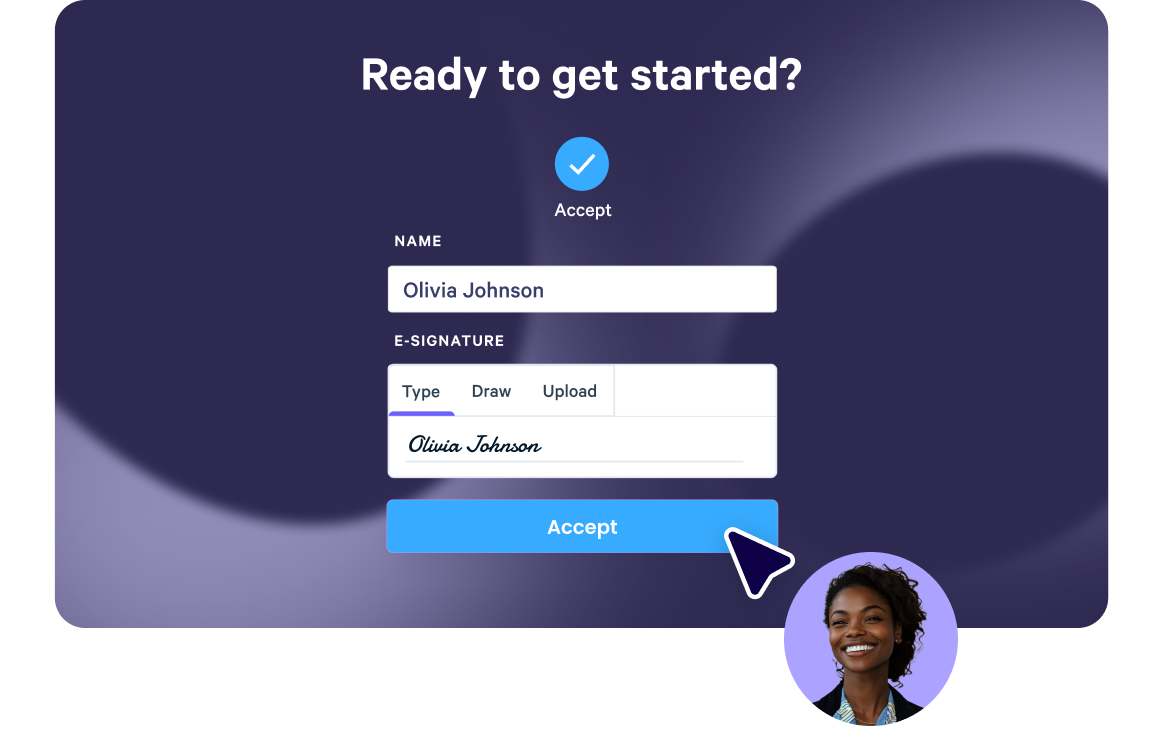
Real-time proposal analytics
Qwilr’s analytics provide full visibility into buyer engagement. Track when proposals are opened, signed, or shared, and get instant notifications for key buyer activities. See what buyers click on, how they engage, and prioritize follow-ups based on real-time insights—all designed to help close deals faster.
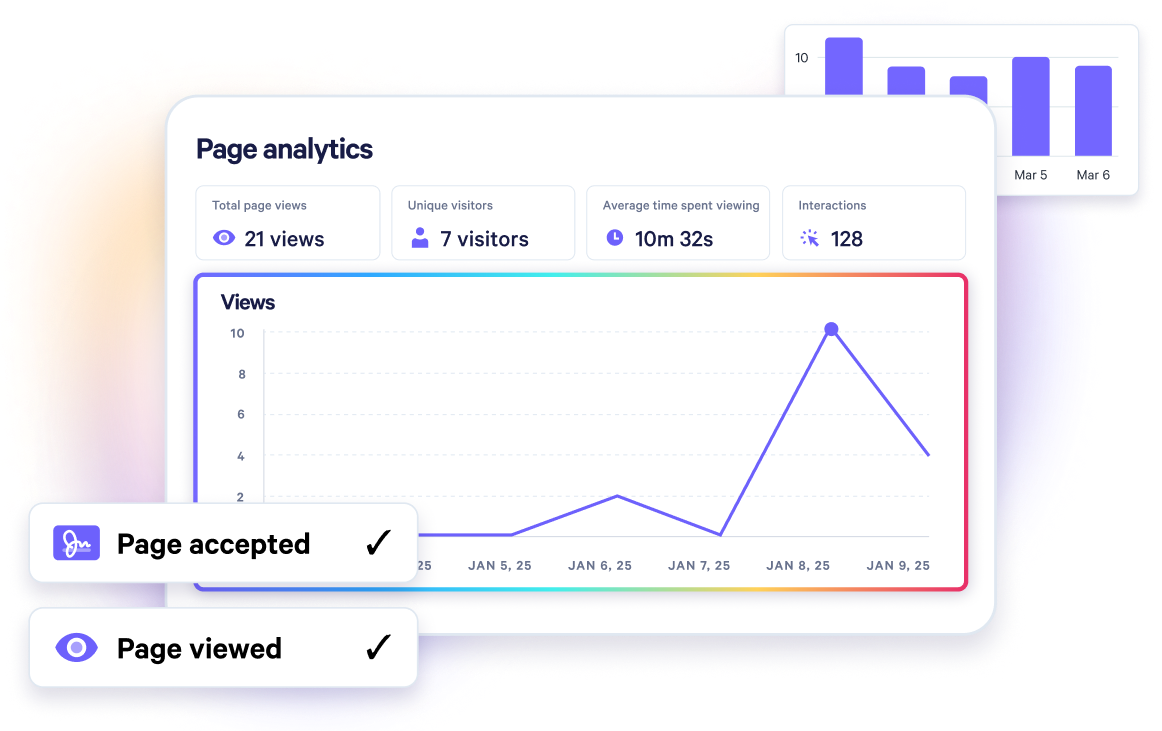
Templates for every use case
Explore templates for sales, marketing, customer success, sales enablement and more.
Explore proposal templatesFrequently asked questions
Before implementing an enterprise sales motion, it’s essential to understand the unique challenges and opportunities presented by enterprise sales and whether it’s compatible with your broader go-to-market (GTM). At its core, the enterprise sales motion is a targeted B2B sales strategy that is completely tailored to meet the specific needs of larger corporations.
To effectively engage with enterprise-level clients, sales representatives must take a deliberate approach to building relationships. This involves taking the time to get to know the prospect and identify their pain points through a series of strategic questions. In the enterprise sales model, representatives must connect with multiple stakeholders, as purchasing decisions are typically made by committee.
By tailoring sales strategies to the unique needs of larger corporations, sales teams can better navigate complex purchasing processes and build stronger relationships with key decision-makers. As a result, companies can unlock new opportunities for growth and success in the B2B marketplace.
Typical enterprise sales cycles tend to last between six and 12 months, resulting in more profitable outcomes. With that being said, extended and complex B2B sales cycles can present unique challenges of their own to sales representatives, requiring buy-in from stakeholders with internal influence. As such, the average Customer Acquisition Cost (CAC) is significantly higher with enterprise sales, however, the payoff in terms of revenue is significantly greater than self-service, SMB (small-medium business), or mid-market sales motions.
An enterprise sales motion is an effective way to increase revenue because enterprise-level customers tend to have larger budgets and are willing to spend more on products and services that meet their needs.
By working with large-scale companies, the enterprise sales motion can help reduce churn rates because enterprise-level customers are often more stable and reliable than SMBs.
Plus, enterprise-level customers tend to have more complex and specific needs, the enterprise sales motion requires sales representatives to work closely with them to develop customized solutions that meet their requirements. This level of engagement can lead to improved customer satisfaction as they feel heard and valued by the company they are working with.
There are a few challenges when implementing the Enterprise Sales model. For one, the sales cycles are longer, fluctuating between six months and one year. Simply put, the longer it takes to close a deal, the more time the prospect has to run into roadblocks or get a deal shot down by a senior leader. Long sales cycles require leadership buy-in, alignment, and patience given it will take time to see results.
In addition, closing enterprise-level deals requires your sales representatives to communicate the value of the solution to multiple stakeholders – in many instances, up to 10 at a time, each with varied objectives and perspectives. Your sales team should be ready to handle any objections and be able to identify the stakeholders with the most internal influence. Enterprise-level deals require sales representatives to build credibility and influence at both the director and VP level, connecting with multiple decision-makers simultaneously.
Finally, implementing the enterprise sales process requires territory planning and significant client research. This will ultimately help organize your sales team’s efforts, ensuring your representatives are on the same page and do not outbound the same accounts.
Like with any sales strategy, there are a number of metrics your business can measure the success of its enterprise sales process. These include but are not limited to:
Closed Won Revenue: The total revenue generated from deals that have been successfully closed by the sales team.
Number of Closed Won Deals: The total number of deals that have been successfully closed by the sales team.
Win Rates: The percentage of deals that have been successfully closed out of the total number of deals in the pipeline.
Average Contract Value: The average value of a contract that is signed by the customer. This metric helps the sales team understand the typical deal size they can expect to close.
Expansion/Contraction/Retention: These metrics refer to different stages of the customer lifecycle. Expansion represents the growth of the customer’s business and their need for additional products/services. Contraction refers to a decrease in demand for products/services. Retention refers to the ability to keep customers over time.
Sales & Marketing Qualified Leads: Sales qualified leads (SQLs) are those prospects who have been identified by the sales team as having a high likelihood of converting into paying customers. Marketing qualified leads (MQLs) are those prospects who have shown interest in the company’s products/services but may not yet be ready to buy.
Sales Pipeline Volume & Multiple: The sales pipeline is the total value of all deals that the sales team is currently pursuing. Pipeline multiple refers to the ratio between the value of the pipeline and the quota assigned to the sales team.
Sales Velocity: A measure of how quickly deals are moving through the sales pipeline from initial contact to close. It is calculated by dividing the total revenue generated by the average length of the sales cycle.
When implementing an enterprise Sales motion, it is important to build a team that embraces the enterprise mindset. Typical enterprise sales teams include a sales director, account executives, solution engineers, customer success, and sales development or market development reps.
As enterprise-level deals involve longer sales cycles, between six and 12 months on average, each member of your sales team will have a key role to play throughout the four stages of this sales process. From prospecting and territory planning to identifying pain points and devising solutions, the Enterprise Sales process requires your team to work seamlessly with multiple stakeholders and decision-makers.






